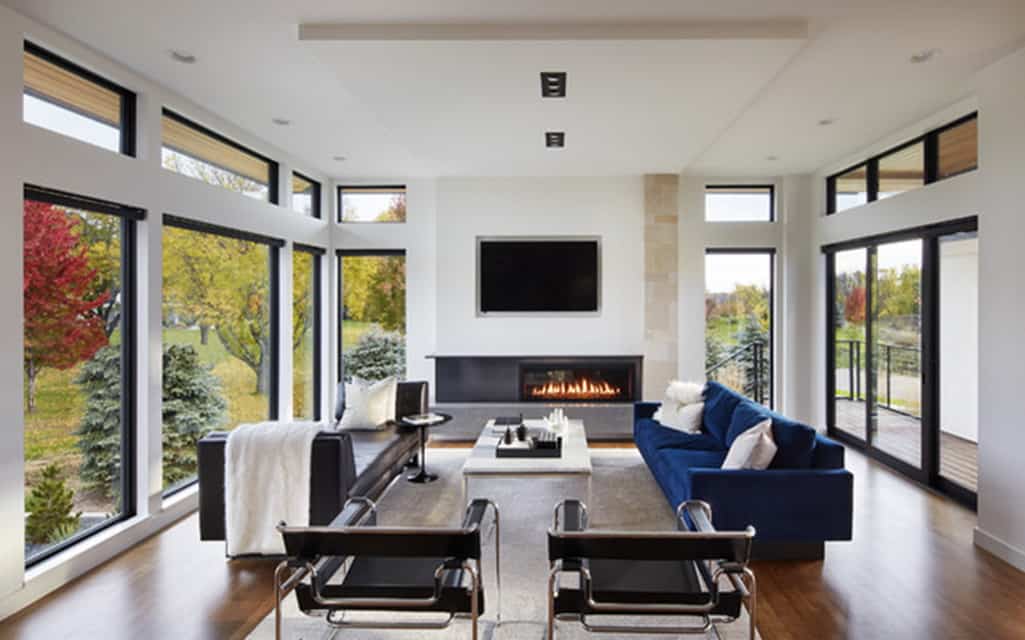When you decorate your home, you can pull several pieces together and make them work. Many people purchase fixtures and furniture as they find them at home furnishings stores.
Another option is to pick a home interior decorating style
The following is your guide to seven popular decorating styles.
1. Rustic
Rustic style comes from the American southeast region during the early 1900s. Before the Industrial Revolution, artisans handcrafted furniture across the Country.
The style features handcrafted furniture, fixtures, and furnishings. It uses earthy colors such as brown, black, and beige. Elements include exposed wood beams, fireplaces, and natural fabrics.
Rustic works well with an open floor plan. It maximizes natural light, rustic plants, and natural textiles. The style celebrates craftsmanship and elegance.
2. Coastal
Coastal remains a popular decorating style. Since individuals spent more time at home in 2021, they realized that they wanted chaotic-free spaces.
Elements of coastal interior decorating include a color palette that resembles the coast. Incorporate blues, whites, and beige. Plus, you want to create texture with pillows, throws, and rugs.
Interior designers believe that this style comes from the Hamptons lifestyle that started in the early 1900s.
Every home requires tables, sofas, chairs, and storage. When you pick coastal as your style, find these furnishings in the coastal color palette.
3. Traditional
The traditional interior decorating style draws inspiration from the 1700s and 1800s in Europe and America. It features hand-crafted elegance and a rich color palette.
Traditional decor took place well before the Industrial Revolution. Americans and Europeans decorated with the raw materials available to them. That’s why the color palette leaned toward browns, blacks, and reds.
Let’s say you pick a rug as your decorating centerpiece. You’ll find that the traditional rug includes intricate markings and rich colors that originate from Persia, the Orient, or Europe. Lawrence of La Brea offers more insight.
4. Minimalist
Minimalist decorating saw a comeback over the last few years. The interior style makes use of a home’s natural elements, especially light.
Architect Ludwig Mies van der Rohe receives credit for starting this decorating style. He optimized natural light and the elements in his designs during the post-World War I era.
The minimalist design skips the clutter. It also skips the fancy chandeliers and ornate furnishings. Instead, it places a focus on functional tables and decorations. For example, mirrors double as art and functional decor.
Even though the decor is minimalist, it doesn’t mean that your budget is minimal. This style is an opportunity to invest in high-end pieces that receive attention.
5. Mid-Century
If you explore the various decorating styles that originated in Europe and the United States, you’ll notice that they result from circumstances of the time.
World War II led to shortages of materials for consumer products. Therefore, the interior design reflected it. The World War II-era birthed the mid-century decorating style.
It uses geometric shapes and elements found in nature. Plus, it integrates contrasting elements. Your color palette consists of neutral and bold shades that contrast against each other.
The same goes for texture. It pairs materials that other styles would skip.
6. Shabby Chic
Shabby chic interior decor comes from the English countryside. Since the countryside stood so far away from the cities, it took these residents longer to obtain consumer goods.
Therefore, they hung onto their furniture, fixtures, and furnishings longer. Artisans handcrafted these items. Thus, they had long lifespans. Although the upholstery and textiles wore out, the item’s bones remained sturdy.
In addition, the countryside dwellers had no time for pretensions. They kept the design simple. Nonetheless, it feels like home.
To achieve the look at home, shop for vintage and antique pieces.
7. Urban
Urban design is a mix of industrial, contemporary, and modern elements. Thus, it’s a cosmopolitan design style found in downtowns, apartments, and warehouse conversions.
The style makes use of the industrial elements found in the space. Some people find inspiration in the exposed beams, maximum natural light, and concrete flooring.
You can also soften the industrial factors with paint, carpeting, and upholstered furniture.
Conclusion
It’s a good idea to pick a decorating style when you update your home’s interior. You’re less likely to incur clutter and optimize your house’s potential. As open floor plans become more popular, you can create spaces within the space. Moreover, it’s an efficient way to optimize an annual decorating budget.



